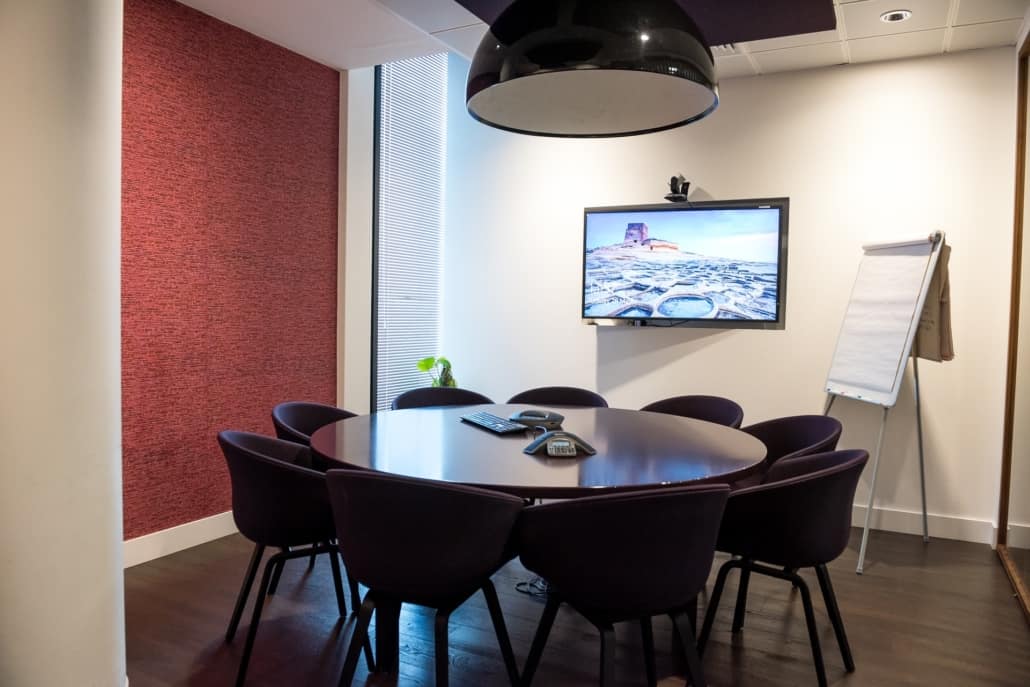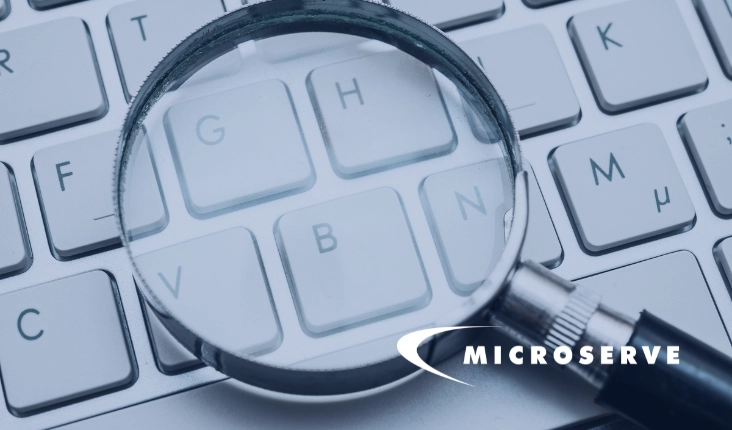Enhance Your Meeting Spaces
The COVID-19 pandemic forced many organizations to send their workers home and shift to a remote office business model. However, as restrictions loosened, organizations began making the gradual move to reopen their doors and bring employees back to their in-office desks again. As 2021 brings us widespread rollout of vaccines, organizations can look forward to bringing more staff back into their offices. The return to the office will continue to be gradual for some time; organizations will still need to maintain physical distancing protocols and keep overall in-person staff numbers lower than they were in pre-COVID days. Some organizations may have chosen to down-size real-estate space, and permanently keep some staff at home, or allow others more flexibility to choose when to work from home and when to come to the office, implementing “desk hotelling” and flexible workspaces.
In 2020, Unified Communication platforms like Microsoft Teams, Zoom, or WebEx, saw overall adoption increase by over 25% year over year, according to the latest International Data Corporation (IDC) Worldwide Quarterly Unified Communications & Collaboration QVie. Many organizations that had not traditionally embraced video-conferencing in fields such law, education, health care, and government have made the move to Unified Communication platforms.
Now that the pandemic has significantly changed the way employees worked, met and collaborated, can we expect that a gradual return to the office will see employees returning to the “old way” of working? We always hear talk of the “new normal.” Now that employees have embraced a new normal that includes regular online meetings and collaboration, organizations need to plan to enable this workflow as their employees gradually return to the office. How can organizations make sure that their office meeting spaces provide an easy to use and effective experience for employees? Here are five ways to make sure your meeting spaces are ready to meet the challenge.

Five Tips To Empower Your Meeting Spaces for Effective Collaboration
1. Make Meetings Easy. The more buttons there are to push, the more cables need to connect, the more drivers to install and software to log in to, the harder it is to start meetings. With video-conference room kits for Microsoft Teams, Zoom, Webex or Google Meet, starting a meeting spaces can be as simple as pressing a single button on a touch screen controller. Remove the complexity and reduce the support headache by implementing easy to use room systems in your meeting spaces.
2. Make Video Viewable. In a pre-COVID world, a 55” inch display may have been “a bit small but okay” in your meeting room. Now it’s too small, the people sitting further away may not be able to read the content on the screen. Installing larger, brighter commercial-quality displays will make your remote participants viewable and make shared content readable. In larger rooms, consider dual-displays so that you can maintain full screen face-to-face viewing on one display and full screen content sharing on the other.
3. Camera Quality Matters. As employees got comfortable turning on their webcams, face-to-face video-conferencing became the main way they interacted with colleagues in 2020. If your meeting room cameras are the same quality as the webcam on your home-office PC, they are underpowered for the room and that face-to-face experience is lost. Video-conferencing does not feel natural if remote participants can barely make out the people in the meeting room. Business quality conferencing cameras feature HD or 4K video, and pan/tilt/zoom capability to bring in-room participants properly in to view. Some cameras have built in AI to detect room participants and automatically frame up the best shot, so that they can all be seen well without anyone needing to touch a remote controller. Some can even detect who is speaking in the room and automatically frame the shot close-up on them for a more natural face-to-face experience.
4. Audio Is Important. How many times in 2020 did we all ask, “Can You Hear Me?” If your meeting spaces are not properly equipped for sound, those words will continue to be spoken by your employees in 2021. We may call it video-conferencing, but the audio is just as important as the video. If participants cannot hear each other, then communication is not happening, and your meeting spaces not productive. You need the right microphones and speakers for your room size. A single small speakerphone on a very large table with participants spread out widely will not provide a productive experience. There are many options to choose from, depending on the room size and aesthetic requirements, such as multiple low-profile mics on the table, beamforming mic systems on the wall, hanging ceiling mics, low-profile ceiling mics or even flat ceiling mic arrays that blend in to your ceiling tiles to capture sound from a whole room without being obtrusive. For conferencing, the audio system must include echo cancellation and can include advanced noise suppression and other audio processing features to make the communication as natural sounding as possible.
5. Enable Creative Collaboration. As employees embraced video-conferencing, many started to use built-in features like annotation and whiteboarding. This worked great for those employees who had a Microsoft Surface or other laptop/tablet hybrid, they grabbed their pens and could sketch, write and annotate and mark-up with ease. Those stuck with a mouse and keyboard could not draw so easily, but used features like text annotations, sticky notes and shapes to collaborate. How can you enable this creative collaboration in your meeting spaces? Interactive Flat Panels (IFP) are a great way to provide a large collaborative and touch screen capability in a room. There are even all-in-one IFPs with a camera and mic built in for conferencing, from education models to Teams-certified collaboration displays, to the Microsoft Surface Hub will enable two-way on-screen collaboration between in-room and remote participants. Or keep it a bit “older school” and turn your traditional dry erase board into an digital one with a whiteboard capture system. These systems ignore the person and capture only the ink on the whiteboard, digitizing it and sharing it with remote viewers in full colour. Some can even recognize text, shapes and empower remote participation.
If your organization needs to “up your game” in your meeting spaces, turn to the experts at Microserve. Our dedicated Audio-Visual team can help you assess your situation and goals, recommend the right technology for your business needs, and provide you with training and support. Contact our team today for a consultation.




